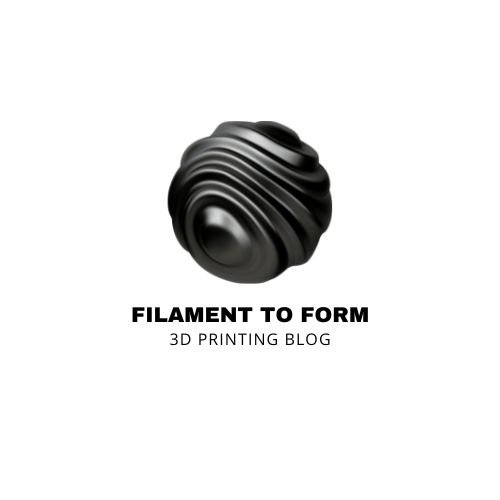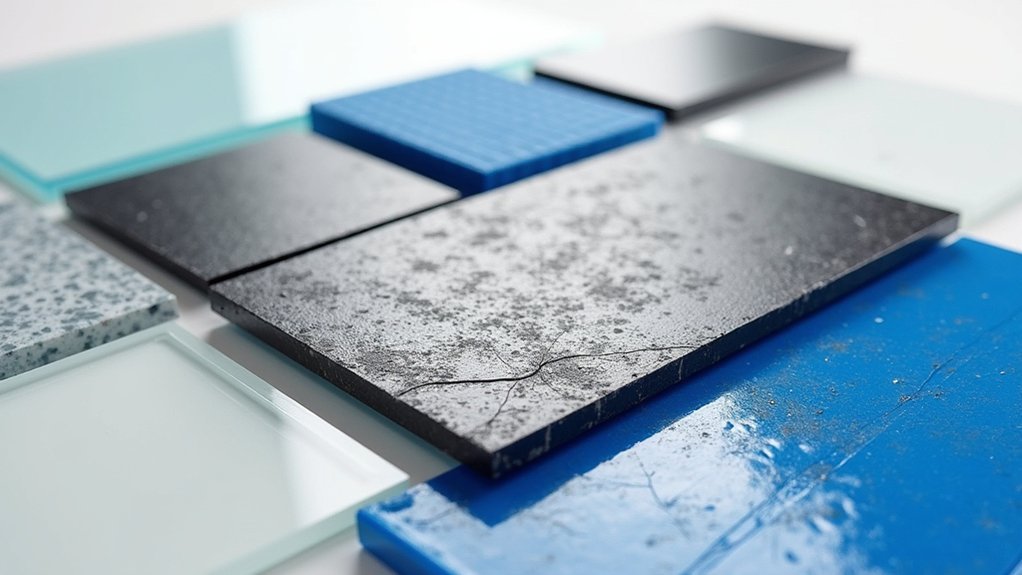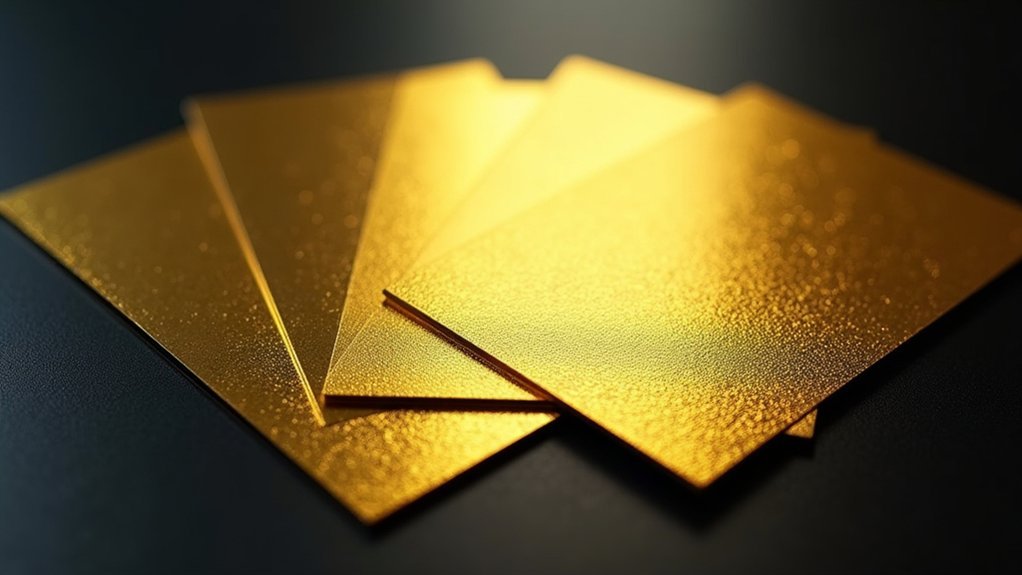Different filaments require specific humidity storage because their unique chemical compositions create vastly different moisture absorption rates. Nylon can absorb up to 10% of its weight in water, while ABS only absorbs around 1%. When moisture infiltrates your filaments, you’ll experience stringing, bubbling during extrusion, poor surface finish, and reduced mechanical properties. PLA and ABS tolerate up to 50% humidity, while nylon and PVA need below 20%. Understanding these material-specific requirements helps prevent costly print failures and guarantees peak performance.
Understanding Hygroscopic Properties Across Filament Types

When you’re selecting filaments for 3D printing, understanding their hygroscopic properties becomes vital for achieving consistent, high-quality results. Hygroscopic filaments absorb moisture from surrounding air, which directly impacts your print quality and material performance.
Nylon stands out as highly hygroscopic, demanding careful storage and pre-print drying procedures. TPU and other flexible filaments also absorb significant moisture, requiring dedicated attention before use. Nylon’s extreme moisture sensitivity can lead to poor interlayer adhesion and reduced tensile strength if not properly dried before printing.
Nylon and TPU filaments demand meticulous moisture control through proper storage and thorough pre-print drying for optimal results.
Meanwhile, PLA and PETG show moderate hygroscopic behavior but still benefit from proper storage practices. ABS and HIPS demonstrate better moisture resistance, though they’re not completely immune to humidity effects.
The chemical composition of each polymer determines its moisture absorption rate, with additives and molecular structure playing important roles in defining specific storage requirements for best printing performance.
Moisture Absorption Rates and Print Quality Impact
Understanding these hygroscopic differences sets the foundation for recognizing how moisture absorption rates directly correlate with print quality outcomes.
You’ll notice dramatic variations between materials—nylon can absorb up to 10% of its weight in water, while ASA typically absorbs only around 1%. These rates depend on your filament’s hygroscopic properties and environmental humidity levels.
When moisture infiltrates your filament, you’ll experience stringing and bubbling as absorbed water rapidly vaporizes during extrusion.
Your prints will suffer from poor surface finish, uneven textures, and compromised mechanical properties like reduced strength and layer adhesion.
You’ll also encounter inconsistent extrusion that affects overall print quality and consistency. Higher humidity environments accelerate these problems, making proper storage essential for maintaining filament performance and preventing material degradation over time.
Additionally, you may notice filament brittleness when moisture levels are excessive, as this brittleness may indicate that the material has absorbed significant amounts of water and requires proper drying to restore flexibility.
Specific Humidity Thresholds for Each Material

You’ll find that each 3D printing material has distinct humidity limits that determine storage success.
PLA and ABS tolerate moderate humidity up to 50%, while PETG handles slightly higher levels before degradation occurs.
However, moisture-sensitive materials like nylon, TPU, and PVA demand much stricter conditions below 30% humidity to maintain print quality.
When humidity exceeds these thresholds, you’ll notice stringy prints with compromised layer bonding that can ruin your entire project.
Material-Specific Moisture Limits
Different 3D printing filaments have vastly different moisture absorption rates and tolerance levels, making material-specific storage requirements critical for maintaining print quality. You’ll need to adjust your storage approach based on each material’s hygroscopic properties.
| Filament Type | Maximum RH | Storage Priority |
|---|---|---|
| PLA | 40-45% | Moderate |
| ABS | 40-45% | Moderate |
| PETG | 30-40% | High |
| Nylon | <20% | Critical |
| Specialty/Carbon Fiber | <20% | Critical |
You’ll notice nylon and specialty filaments demand the strictest humidity control, requiring industrial-grade storage solutions. PETG sits in the middle, being more temperamental than PLA or ABS but less demanding than nylon. Exceeding these thresholds causes bubbling, stringing, and mechanical property degradation that’ll ruin your prints.
Since humans cannot accurately perceive humidity variations, you’ll need a humidity gauge to monitor your storage environment rather than relying on subjective comfort levels.
Critical Storage Guidelines
Since moisture absorption varies dramatically between filament types, implementing precise humidity thresholds becomes essential for preventing costly print failures and material degradation.
You’ll need to maintain specific environmental conditions based on your filament’s characteristics.
Here are the critical humidity thresholds you must follow:
- PLA and ABS filaments – Store below 40% humidity in cool environments between 15°C-25°C
- Hygroscopic materials like nylon – Maintain humidity below 20% due to high moisture sensitivity
- Smart storage solutions – Use cabinets maintaining 15-20% humidity with active monitoring
- Long-term storage – Vacuum-seal filaments with silica gel desiccants for extended preservation
You’ll prevent aesthetic defects, maintain mechanical properties, and extend shelf life by adhering to these material-specific requirements in airtight, humidity-controlled environments. Research reveals that time significantly affects how quickly your filaments absorb moisture, making prompt storage after opening packages crucial for maintaining print quality.
Comparing PLA and ABS Tolerance Levels
When storing 3D printing filaments, PLA and ABS exhibit markedly different tolerances to humidity exposure. You’ll find that PLA absorbs moisture more rapidly and in larger quantities than ABS, making it considerably more susceptible to humidity-related degradation. While both materials perform best when stored between 30-50% relative humidity with desiccants, PLA demands stricter control.
| Factor | PLA | ABS |
|---|---|---|
| Moisture Absorption Rate | High/Rapid | Moderate/Slower |
| Print Quality Impact | Severe degradation | Subtle effects |
| Storage Tolerance | Requires strict control | More forgiving |
ABS maintains usability longer in less controlled environments, though it’s not immune to moisture issues. Both filaments benefit from desiccant storage, but you’ll need to dry PLA more frequently to restore ideal performance. The hygroscopic nature of PLA means it naturally draws water molecules from the surrounding air, which explains why it requires more vigilant storage protocols than its petroleum-based counterpart.
Special Requirements for PETG, Nylon, TPU, and PVA

Beyond PLA and ABS, specialty filaments present unique humidity challenges that’ll test your storage systems.
Each material’s hygroscopic nature demands specific attention to prevent printing disasters.
Here’s what you’ll need for proper storage:
- PETG: Keep between 30-50% RH in airtight containers with silica gel, though high-performance variants need 25% or lower.
- Nylon: Maintain below 20% RH using vacuum-sealed bags with strong desiccants due to extreme moisture sensitivity.
- TPU: Store under 40% RH in sealed containers, tolerating brief exposure to 50% maximum.
- PVA: Requires below 20% RH with vacuum-sealed storage and strong desiccants due to water-soluble properties.
You’ll often need active drying before printing, especially with Nylon and PVA, which can become unusable without proper moisture control. Different PETG brands exhibit varied moisture sensitivity, with some requiring strict drying while others perform well without any preparation.
Effective Storage Methods and Humidity Control Solutions
Understanding these material-specific requirements leads naturally to implementing the right storage systems and humidity control methods.
Proper filament storage starts with understanding each material’s unique vulnerability to environmental factors like moisture and temperature.
You’ll want airtight containers as your first line of defense against ambient moisture. Vacuum-sealed bags combined with silica gel desiccants provide excellent passive protection for most filaments.
For active control, specialized storage cabinets with built-in humidity sensors and dehumidifiers maintain consistent conditions automatically. Digital hygrometers let you monitor storage environments in real-time, ensuring intervention before problems develop.
When humidity control fails, filament dryers remove absorbed moisture using controlled heat. Smart cabinets combine sealed chambers, sensors, and active drying for thorough automation. Commercial options like the eBox from eSun offer heating and weighing capabilities with material-specific presets for comprehensive filament management.
Don’t forget UV protection—opaque containers prevent light degradation alongside moisture control, maintaining your filament’s integrity longer.
Consequences of Improper Humidity Management
Moisture infiltration wreaks havoc on your 3D printing filaments, triggering a cascade of problems that compromise both material integrity and print quality.
When you don’t control humidity properly, you’ll face immediate printing issues and long-term material degradation.
Your filaments suffer these critical consequences:
- Mechanical failure – Nylon absorbs up to 10% of its weight in water, drastically reducing tensile strength.
- Print defects – Moisture creates bubbles, uneven layers, and poor adhesion in ABS and PETG.
- Material brittleness – PLA undergoes hydrolysis, making filaments snap during printing.
- Irreversible damage – Prolonged humidity exposure permanently degrades polymer chains.
You’ll experience inconsistent extrusion, stringing, and surface quality issues that increase costs through failed prints and material waste. During the printing process, absorbed moisture turns to steam at high temperatures, causing crackling sounds and uneven material flow that further compromises your print results.
Frequently Asked Questions
Can I Salvage Wet Filament That’s Been Stored Improperly for Months?
You can attempt salvaging wet filament using oven drying or dehydrators, but success depends on filament type and moisture exposure duration. PLA’s more forgiving than nylon or PVA, which may suffer permanent degradation.
Do Humidity Requirements Change Based on Printing Temperature and Nozzle Size?
Humidity storage requirements don’t change based on printing temperature or nozzle size. However, higher temps and different nozzle sizes will amplify existing moisture problems, making proper storage even more critical.
How Often Should I Replace Desiccant Packets in Storage Containers?
You should check desiccant packets every two weeks following CFS guidelines. In humid environments, inspect them monthly. Replace immediately when they’re ineffective, as neglecting replacement beyond three months risks moisture leakage and equipment damage.
Will Mixing Different Filament Types in One Storage Container Cause Problems?
You’ll face problems mixing different filament types in one container because they have varying moisture sensitivities, absorption rates, and storage requirements, leading to uneven moisture distribution and potential contamination between materials.
Does Room Temperature Affect How Quickly Filaments Absorb Moisture From Air?
Yes, room temperature directly affects moisture absorption speed. You’ll find filaments absorb moisture faster in warmer conditions because hot air holds more water, accelerating uptake into your filament materials.
In Summary
You’ll protect your investment and guarantee successful prints when you store each filament type at its specific humidity requirements. Understanding your materials’ hygroscopic properties lets you prevent moisture-related failures like stringing, bubbling, and poor layer adhesion. Don’t let improper storage waste your time and materials – implement proper humidity control solutions and you’ll achieve consistent, high-quality results across all your printing projects.





Leave a Reply